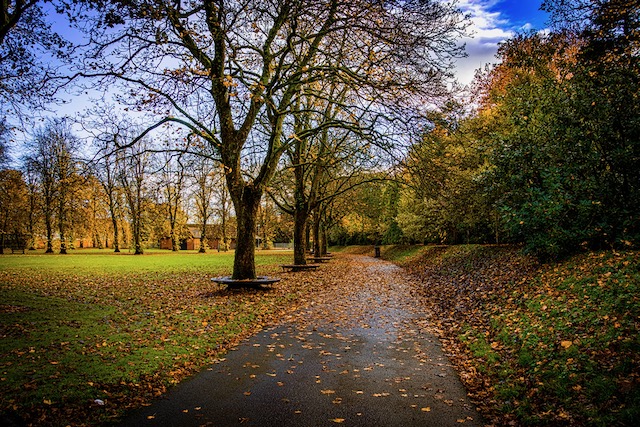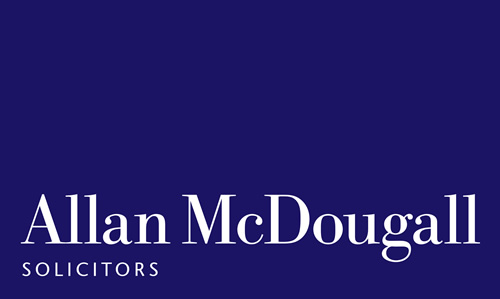
Accidents in a public place

Under Scottish law, you may be entitled to compensation if you’ve been injured in a public place.
At Allan McDougall Solicitors, we understand how stressful and damaging these kinds of injuries can be. That’s why our experienced personal injury lawyers help you understand your rights and how to pursue a compensation claim if someone else was responsible (even if you think you might be partly to blame).
Understanding Occupiers’ Liability and Public Liability
Two key areas of the law apply to accidents in public spaces: occupiers’ liability and public liability. Here’s how the two are broken down:
What is Occupier’s Liability?
Occupiers’ liability is when an accident takes place on premises controlled by a person or organisation, legally known as the occupier. Common examples of these premises include shops, restaurants, leisure centres, and private businesses.
Under the Occupier’s Liability (Scotland) Act 1960, the occupier has to take reasonable care to ensure their premises are safe for visitors. If they don’t and you are injured, you will probably be able to make a claim against them.
What is Public Liability?
Public liability is when public bodies, like councils, bear the responsibility of keeping areas safe. Common examples of these spaces include poorly maintained roads, pavements, and parks.
Councils and other public bodies may be liable if an accident takes place in these places, if they haven’t carried out inspections and relevant maintenance.
What counts as a public place?
In the legal context of accidents and compensation, a public place can be practically anywhere outside of your home.
Examples of public places can include:
- Supermarkets, shops, and retail parks
- Pavements, roads, and bicycle paths
- Public parks and playgrounds
- Gyms and swimming pools
- Buses, trains, and transport stations
- Restaurants, bars, and cafes.
To make a successful compensation claim, the accident must be caused by someone else’s failure to make the area safe. This can be due to slippery or uneven surfaces, poor lighting, obstructions, unsafe equipment or structures, or a lack of appropriate signage, to name a few.
Who can be held responsible for accidents in a public place?
Responsibility will either be the occupier or public body, whichever had control over the premises or area where your injury took place.
The person or organisation responsible for accidents in public places can be:
- Local authorities
- Shop owners
- Event organisers
- Transport operators
- Private companies managing public venues.
It’s also possible that multiple parties are responsible. We can identify the liable party and pursue compensation on your behalf.
What should you do after an accident in a public place?
If you’re injured in a public place, you should try and take the following steps:
1. Report the accident
Do this to a manager, local authority, shop owner, or whoever is in charge of the place where the accident or injury has taken place.
2. Take photographs
As well as taking photographs of any injuries, capture the scene of the accident. You should also take photos of the cause of the accident, so a wet patch with no sign, for example, if possible.
3. Speak to witnesses
If anybody else saw the accident take place, speak to them and take their contact details. They may be able to strengthen your claim.
4. Seek medical attention
Even if your injury doesn’t seem major, seek medical attention at the hospital or your local GP.
5. Keep records of any losses
Keep receipts for things like taxi fares, buses to the hospital, medical supplies, or private treatment. We shall obtain the necessary details of other financial losses, like a loss of earnings, as a result of your injury.
In Scotland, there’s a strict three-year time limit from the date of the accident, but a case takes time to build. We strongly recommend seeking legal advice as soon as possible after your accident.
What can you claim for?
If your claim is successful, you may be able to claim compensation for:
- Pain and suffering
- Loss of earnings and future earnings
- Medical expenses and rehabilitation costs
- Travel expenses
- Care and assistance.
How Allan McDougall Solicitors can help
Our specialist team of personal injury lawyers has assisted thousands of clients across Scotland with accidents in public places.
Helping you get the compensation you’re entitled to, we offer the following services:
- Free initial advice
- No-win, no-fee payment arrangements
- Clear and compassionate guidance, step by step, throughout your claim
- A track record of success when it comes to occupiers and public liability cases
As well as assessing the circumstances of your accident, we shall gather the necessary supporting evidence for a claim, negotiate with insurers, and represent you through to the conclusion of your case, including court proceedings if required.
Get in touch today
If you’ve been injured in a public place in Scotland, don’t hesitate to get in touch. We’ll help you establish whether or not another party is to blame, explain your options, and help you decide on the best way forward.
Contact us today for a free, no-obligation consultation with our experienced, friendly, personal injury law team.
Contact us
- Email us
- Call our personal injury claims team free on 0808 560 0872
- Arrange a callback by using our enquiry form
Share this page
Allan McDougall
With you every step of the way.
- Personal injury claims
- Our personal injury team
- How to make a personal injury compensation claim
- How to choose a personal injury solicitor
- Claim now
- Personal injury claim calculator
- How claims are valued
- Frequently asked questions
- Types of personal injury claim
- How to sue someone in the Scottish courts
- Recent successes
- Case studies
- Testimonials
- Injury Compensation Alliance
Personal Injury Claim Calculator
What our clients say
- I had an industrial deafness claim, and Gordon Milligan and Alison Bosshardt helped me through the process with an acceptable outcome. Thanks to all involved.
K.G. - I was extremely impressed with the diligence and perseverance shown by Steven Blacklaws, Jackie Raitt and the team whilst dealing with my claim. They were able to secure an excellent outcome for me. I would have no hesitation in recommending their services or engaging them again.
J.C. - Excellent service from Stephen Irvine. Keep up the good work!
I.B. - Gordon Milligan was sympathetic and understood the distress the accident caused my family and me, and helped provide valuable advice on next steps. He is very approachable and was very professional.
C.M.

